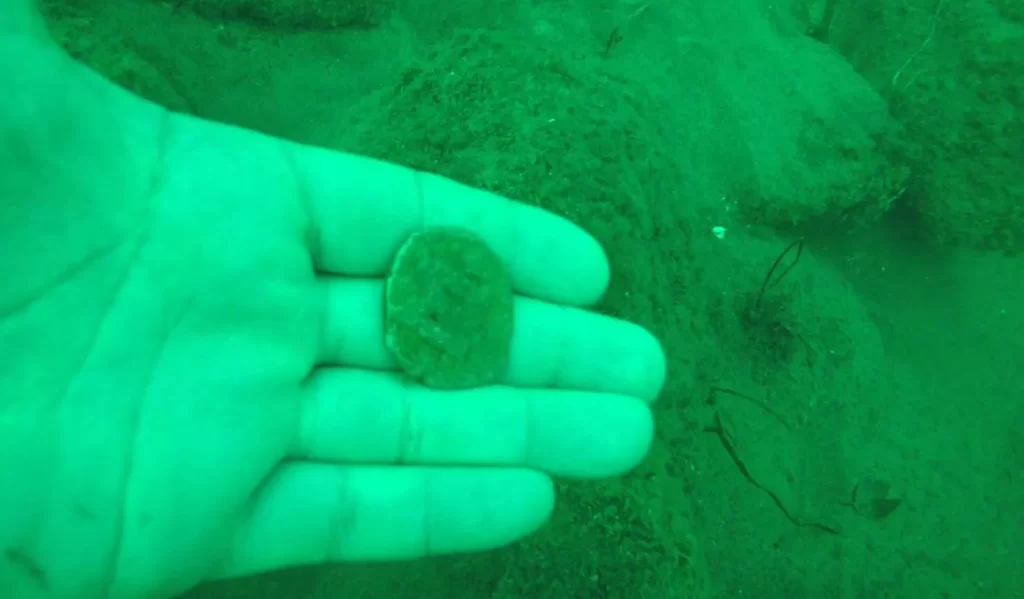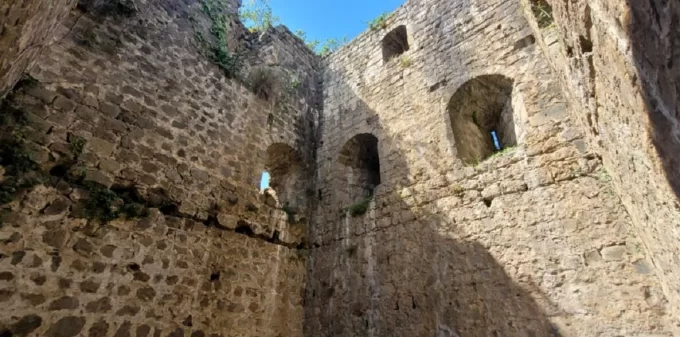Within the scope of the excavations started in Akçakale Castle, which is known to have been built by Emperor Alexios II in the 13th century and located at a point overlooking the sea in Trabzon’s Akçaabat district, divers are also looking for ruins under the sea.
While the single-nave church was unearthed on land, various historical remains of the castle were found under the sea. District Mayor Osman Nuri Ekim said, “We detect finds from the Roman, Byzantine and Ottoman periods.”
Excavations started 8 months ago by the Museum Directorate and Akçaabat District Municipality continue in Akçakale Castle, which is known to have been built by the Emperor Alexios II in the last period of the 13th century on the seaside in Akçaabat and passed under Ottoman rule in 1468 after the conquest of Trabzon.
During the excavations, 8 tombs and skeletons belonging to these tombs, coins and ceramic pieces belonging to the Byzantine and Ottoman periods were found. While the single-nave church was unearthed on land, various historical remains of the castle were also found under the sea.
In the castle, where many graves were found, it was revealed that some of the graves were destroyed by Byzantine burial methods, some of them were protected with roof tiles, and some of them were buried directly in the ground.
Searches are also carried out in the sea for the remains of the historical castle. In the company of divers, various historical ruins belonging to the castle were reached on the coats of arms at a depth of 80 meters under the sea. While the excavation works are aimed to be completed by June, the remains unearthed after the completion of the works will be exhibited in the same castle.
‘We did a research together with our divers’
Akçaabat Mayor Osman Nuri Ekim stated that the excavations were carried out comprehensively and said: “We started an excavation work here 8 months ago together with the museums directorate. The excavation we have carried out is a research with our divers both inside the inner walls of the castle and under the sea, in the area under the walls. During this research, we also found remains from that period in the sea part.



We find cannons of the period and materials belonging to those cannons, and finds from the Roman, Byzantine and Ottoman periods and recent history in the castle. During the excavations, we found cannons, cannonballs, porcelains from the Roman and Byzantine periods, and bone fragments. A cistern was detected during the studies. Fresh water comes out of the cistern and meets the needs of this castle. At least with the fresh water source coming out of that cistern, the water needs of the castle at that time were met. We are taking these finds under protection together with our museum directorate.”
‘We will work to bring the region to tourism’
Noting that they plan to complete the excavation work in the castle in June, Ekim said, “After the excavation work is finished, our restoration work will begin. The data collected from the finds found in this region will be processed and our project will be carried out on how to make a restoration of this region.
We plan to finalize the excavation here in about a month, and then we will prepare our restoration plans and work to bring this region to tourism. We will also carry out a study at the point of evaluating the area as a social area. It is also important that Akçakale has a history dating back 1200 to 1300 years. We are trying to identify and reveal the experiences that have lived here since then, together with this historical excavation.”
Akçakale Castle
Akçakale Castle, which has a history of over 900 years in the Akçakale District of Trabzon’s Akçaabat district, passed under the Ottoman rule in 1468 after the conquest of Trabzon. The castle was transferred to the state as treasury property during the Republic period. Salvage excavations were carried out in 2007 in Akçakale Castle, which was expropriated in 2005 for a cost of 475 thousand TL.
During the excavations carried out at that time, 4 skeletons, bone fragments, earthenware pots, bronze nails and fragments of Byzantine pottery were found. Although most of the castle, which was made of rubble and cut stone, was destroyed, its main body has survived to the present day, and in recent years the castle has been used as agricultural land and children’s playground.
